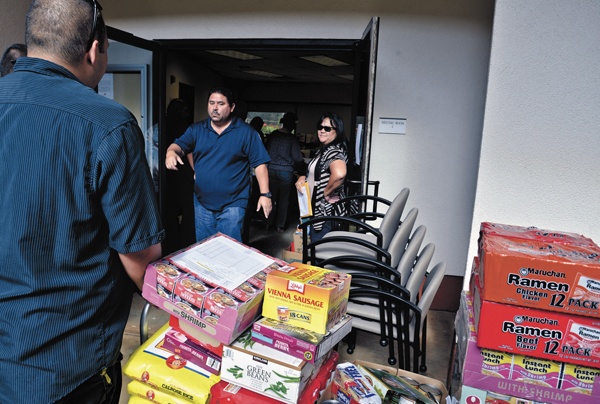LIHUE — A new report on Kauai leading indicators found many positive trends, while others are troubling and require increased focus and action. The report, “Measuring What Matters for Kauai: Community Indicators Report 2012,” is the fourth report in this
LIHUE — A new report on Kauai leading indicators found many positive trends, while others are troubling and require increased focus and action.
The report, “Measuring What Matters for Kauai: Community Indicators Report 2012,” is the fourth report in this biennial series from the Kauai Planning & Action Alliance. In this edition, KPAA continues to track data and identify trends for 49 community indicators that reflect the island’s quality of life, sustainability and resiliency.
“Kauai is one of about 300 communities around the country with indicator reports,” KPAA President and CEO Diane Zachary stated in a press release this week. “Indicator data are used to provide a snapshot of how a community is doing and its progress toward implementing a long-term vision.”
The results of the Kauai report are intended to help decision-makers identify trends and areas where action will be needed as the island grows, develops and changes, she added.
With the guidance of a Citizens Advisory Committee and public input, the nonprofit KPAA identified the indicators for seven inter-related areas that provide a snapshot of how the community is doing.
These areas include economic and business climate, public education, neighborhood and community health and well-being, civic engagement, natural environment, land use and rural character, and cultures and arts.
Report findings:
• Job counts increased, unemployment fell and visitor counts increased as the economy began a slow but steady improvement. At the same time, the number of visitor units declined.
• Island prices rose faster than the national inflation rate and although family income also rose, it did not keep pace with inflation. Many workers continued to need to hold multiple jobs.
• Home sales bounced back from the lows of the recession and housing affordability improved as home values stayed low. For renters, housing was somewhat more affordable as median rents fell slightly.
• The income gap increased on Kauai, resulting in a growing poverty rate of 12.9 percent. The number of children living in poverty increased to 18.3 percent.
• Child abuse and neglect cases increased sharply and the number of medically uninsured jumped.
• The need for emergency food through the island’s food pantries increased from 2010 levels, along with the number of those who are homeless.
• In education, the number of children attending preschool declined 6 percent from the 2010 level. There were signs that student proficiency was improving and the on-time graduation rate of 84 percent held steady, slightly above the state rate of 82 percent.
The share of two-and-four-year college-bound graduates rose as 61 percent of recent high school graduates enrolled in college. Among those entering college, fewer needed remedial and developmental math and English, still 34 percent and 38 percent respectively needed remedial or developmental training before taking college-level courses.
• There were signs the island is becoming more sustainable as electricity usage per residence and sales declined and as the share of energy from renewable sources increased to over 10 percent by the end of 2012. The waste diversion rate increased to 40 percent and water consumption per capita decreased. An increasing share of families gathered or grew their own food and about one-third relied on these sources for more than 10 percent of their food.
• Although bus ridership continued to grow, the number of vehicles, vehicle miles traveled and gas demand all increased. About one-third of those who commute to work stated a willingness to carpool or take the bus, they don’t yet do so.
• Environmentally, the number of beach water samples not meeting Department of Health water quality standards jumped from four in 2010 to 25 in 2012.
• Enrollment in Hawaiian language and culture classes continued to rise, while hula and other cultural dance and song attracted broad participation.
• Two-thirds of residents volunteered time in the community and, compared to the 2010 survey, more said the aloha spirit is stronger than ever.
The purpose of these biennial reports is to:
• Track areas important to the community, drawing on the values and community vision in the Kauai General Plan 2000, to determine Kauai’s trends;
• Provide tracked information to government, businesses, nonprofits and citizens to assist in planning, policy-setting and resource allocation decisions; and
• Identify and promote opportunities for action that will move Kauai toward the vision and directions the community has established.
Based on the indicator trend data, the Kauai report also identifies 46 “opportunities for action” that can be taken by government, business, nonprofits and individuals to move in directions aligned with the General Plan. The report includes an 18-page profile of Kauai County that may assist grant writers and business plan developers.


